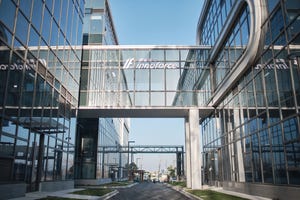
Having abandoned its COVID-19 candidate CVnCoV, CureVac has switched up its manufacturing network in preparation for a second-generation messenger RNA (mRNA) vaccine.
For the third quarter 2021, German biotech CureVac reported a loss of €143.5 million ($162 million) – a €106.4 million increase compared to the same period in 2020.
According to the firm, the increase was in line with high development costs of CVnCoV, the firm’s first-generation mRNA vaccine targeting COVID-19. This was propped up due to a change of manufacturing activities on the back of the vaccine showing an efficiency rate of just 48%, including the termination of contracts with several third-party manufacturers including Wacker and Celonic.

Image: Stock Photo Secrets
CureVac ended the CVnCoV program on October 12 and has since shifted its focus to its second-generation COVID-19 vaccine program CV2CoV, which features a new mRNA backbone, jointly developed with GlaxoSmithKline.
As such, the firm has begun reallocating its remaining manufacturing to support this program, with CEO Franz-Werner Haas explaining more on a financial call last week.
“We are continuously adjusting our capacity projections to ensure that we can rapidly and flexibly deliver potential second-generation vaccines in line with the anticipated volumes. The switch of the manufacturing setup from the production of first to second generation construct at our in-house GMP three facility and the facilities of our European network partners is progressing,” he told stakeholders.
“This includes the implementation of processes for flexible adoption to new variant specific constructs as well as processes for the production of modified mRNA construct, which we explore as part of the second-generation development program.
“For CV2CoV, we have already produced material for the upcoming Phase I clinical trial in our in-house plans, GMP one and two. The buildup of our commercial-scale manufacturing plant GMP four is also progressing as planned, representing an important factor in our setup to efficiently deliver on future public health needs and pandemic preparedness initiatives.”
The withdrawal of CVnCoV had further direct consequences with CureVac having to return the unspent amount of a €450 million prepayment from an Advanced Purchase Agreement with the European Commission.
Government tenders
As a direct consequence of the withdrawal of CVnCoV, the existing Advanced Purchase Agreement with the European Commission, which was predicated on employing CVnCoV to address the acute pandemic need, will cease. CureVac remains in contact with the European Commission and is supportive of its public health efforts.
While Haas could not talk about future government tenders regarding CV2CoV, he did speak about how he sees future national deals evolving in the COVID space.
“There is a clear need for a decentralized available manufacturing capacity in the different locations, which is of utmost importance to take the lessons learned because I think no government wants to enter into the situation where we have been in 2021 – 2020 and beginning of 2021,” he said.
“With the increasing incidence certainly, there is an understanding for more vaccines and most probably also flexible vaccines if there is a variant which is not that well covered by the current vaccines. And even with the current vaccines, you see that the intensive care units are going to be filled, but good that we have got the vaccines because, otherwise, the world would look different… how this translates then into products to be pre-purchased like it has been in the beginning, and in Europe, this is also still ongoing.”
About the Author
You May Also Like

schedl_b_and_w.jpg?width=100&auto=webp&quality=80&disable=upscale)
schedl_b_and_w.jpg?width=400&auto=webp&quality=80&disable=upscale)






